10 Tips to Light Up Your Home and Make it More Energy Efficient
According to ENERGY STAR®, if every American home replaced just five high-use light fixtures or the bulbs in them with LED or Fluorescent lights that have earned the ENERGY STAR label, each family would save more than $60 every year in energy costs, and together keep more than one trillion pounds of greenhouse gases out of the air, which roughly equals the emissions of eight million cars.
By implementing any of the following tips you will be able to make your home more energy efficient and save not only money but the environment as well.
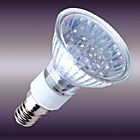
Tip #1 – Use LED lights and/or fluorescent bulbs
By now, most of the American consumers are aware of the inefficiencies of the incandescent bulbs and the direct impact they have in heating your house and increasing your electric bill. By replacing your old incandescent lights with LEDs or fluorescent lights you’ll be saving about 20% in energy and will need to change your bulbs less often as these lights last much longer.
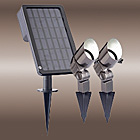
Tip #2 – Use solar landscape and solar architectural lights
Solar landscape and other solar architectural lights are becoming very popular. Consumer demand and current technology has made them easy to use and implement as well as cost effective and affordable. Solar exterior lights are available in a wide selection of designs and colors to match any décor style and enhance the look of your garden and building.
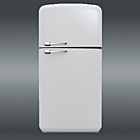
Tip #3 – Replace your old appliances
Contrary to popular belief, what consumes the most energy inside your home are not the lights but the various appliances and the AC, therefore, upgrading your home with ENERGY STAR® and/or SMART appliances is not an expense but an investment. Smart appliances can be connected to smart electric meters or home energy management systems to help you shift your electricity use to off-peak hours and avoid those high electrical rates.

Tip #4 – Buy a programmable or a learning thermostat
Let’s face it, most of us leave home in a hurry when heading off to work and usually we don’t remember to change our thermostat’s temperature settings. To avoid wasting energy and money, buy a programmable or a learning thermostat. A Learning thermostat programs itself and turns itself down when homeowners are away and can be controlled from anywhere with free Web or Mobile apps.
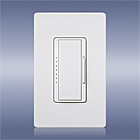
Tip #5 – Install dimmers throughout your home
Installing dimmers on at least the key rooms of your home can give you the ability to adjust the light levels to create a new atmosphere and save on your monthly billing. Every time you dim the lights you save energy and extend the life of your light bulbs. Dimming by 25%, for example, saves 20% energy.
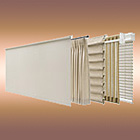
Tip #6 – Control daylight and room temperature with automated motorized shades
Shades are usually perceived only as a design element, but add automation to them and they become a functional energy savings element. Motorized shades can be programmed to block the glare or prevent the heat from escape based on the season and can save you between 10-30% on heating and cooling costs.
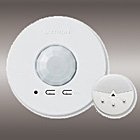
Tip #7 – Add occupancy/vacancy sensors and appliance controls
How many times have you forgotten to turn off the garage lights or how often your children leave lights on? Occupancy and vacancy sensors turn lights on automatically when you walk into a room and off when you leave preventing those situations and saving up to 20% on lighting. Appliances standby power can amount to up to 10% of a home’s electricity use. Appliance controls turn off standby power and forbid that kind of energy waste.
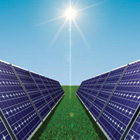
Tip #8 – Adopt alternative energy sources
Wind and/or solar energy can in some cases generate enough electricity for your entire home. Modern and efficient solar panels are designed to maximize the harvesting of the solar rays while keeping a modern profile that won’t interfere with your home’s architecture and will practically blend with most roofs to virtually eliminate your electric bill and increase your positive impact on the environment.
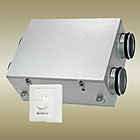
Tip #9 – Improve your HVAC with an air handling unit
An air handler or air handling unit (AHU) is part of an air conditioning and forced air heating system. It is housed indoors and is designed to circulate and condition air through the system making your air conditioning unit more energy efficient. An air handler may be housed in your garage a closet or in your attic.
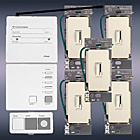
Tip #10 – Coordinate energy control with an integration system
Use modern technology to manage your entire home energy consumption. An integration system will allow you to control and operate lights, shades, audio/video, appliances, HVAC, and even your home security system from a single “brain”, making your home more energy efficient. For example, a keypad button can be labeled “green” and programmed to automatically dim your lights by 5%, lower your shades, and set back your home’s temperature by 2%, all with a single touch, giving you a convenient way to save energy.
Remember, implementing any of the 10 tips mentioned above will allow you to light up your home while making it more energy efficient, and will help you lower your monthly electrical bill by at least 10%.